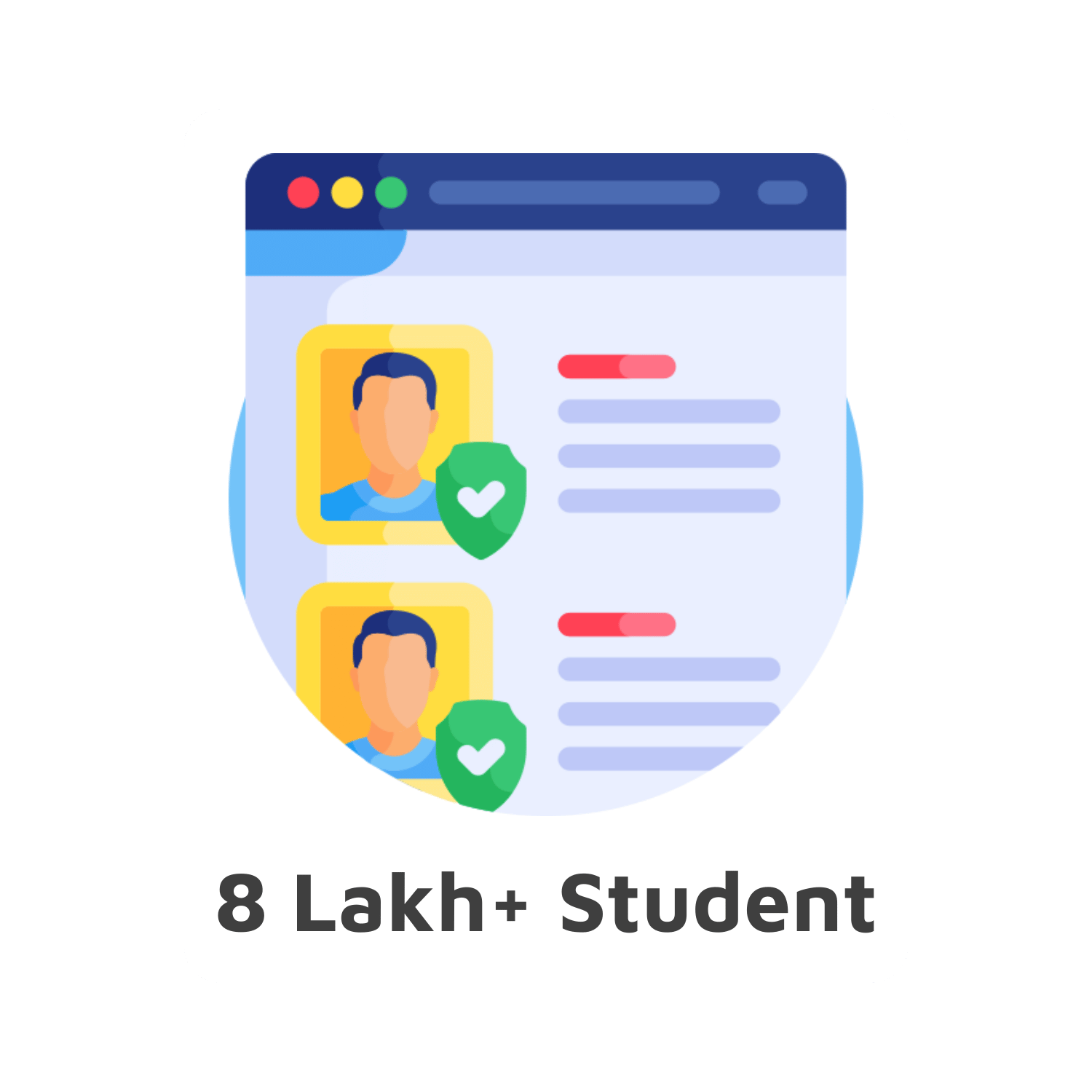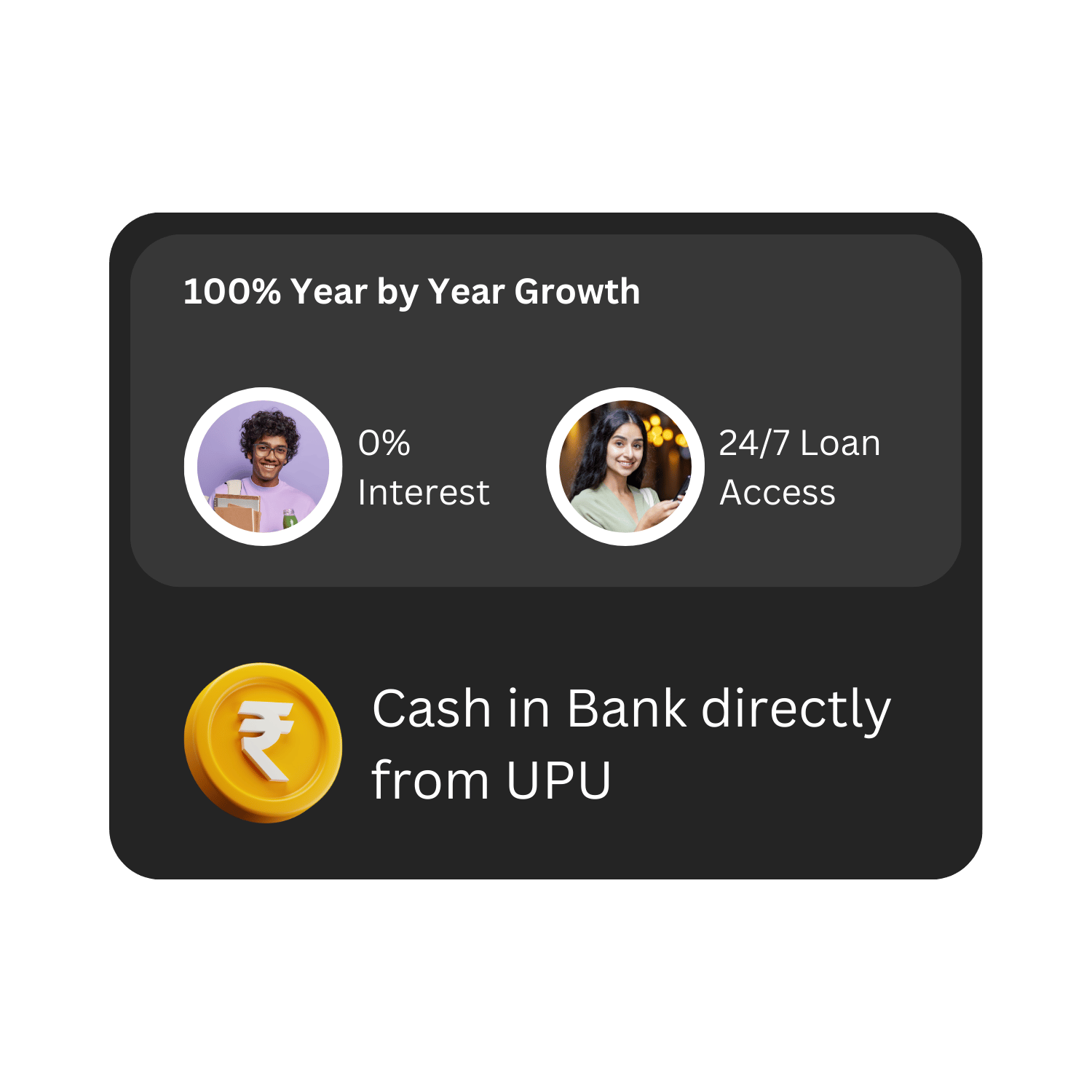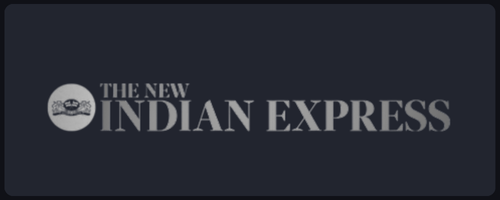Personal Loan for Students with no Job
#1 Instant Credit App for College Students in India
Empowering Your Financial Freedom



Dear Students,
Welcome to StuCred, your trusted partner in achieving financial independence. We offer instant, interest-free credit designed exclusively for college students across India.
Whether it’s for tuition, textbooks, or day-to-day expenses, StuCred is here to support you.

Bharath Reddy
StuCred helped me during my medical emergency. I strongly recommend this app to all the students. Its easy to use and and qiuck to get Money in your bank account

Dhanushiya
The 0% interest is a lifesaver. StuCred has made managing my finances so much easier. It’s an easy way to increase the credit limit as a student.
8Lakh+ students across India are LOVING ❤️ our services. Join the StuCred Community Now!


Why Students Love StuCred
StuCred is more than just a credit app; it’s a trusted partner in student life.
The app is secure, reliable, and designed to cover essential academic expenses, allowing students to focus on their studies without financial stress.
Instant Credit Approval:
The streamlined 5-step verification process means you can get approved for credit in 24 Hours—no lengthy paperwork or waiting periods.
0% Interest:
StuCred offers instant access to credit with absolutely 0% interest, making it easier for students to manage their finances without worrying about extra costs.
Trusted by 8L+ Students:
With a large and growing community of satisfied users across India, StuCred is a name students trust for reliable, hassle-free financial support.
24/7 Loan Access:
Whether it's day or night, StuCred is always there when you need it. Access your credit anytime, anywhere, ensuring you’re never stuck without funds.
Why StuCred?
StuCred offers instant, interest-free credit exclusively for college students in India. With no hidden fees and 24/7 access to funds, StuCred is trusted by over 8L+ students from top institutions.
The app ensures safe, secure transactions with bank-grade security, making it the go-to financial solution for students.
No Hidden Fees
Transparent, student-friendly terms. What you see is what you get.
Available Anytime, Anywhere
Get access to your funds 24/7, no matter where you are.
100% Safe & Secure
Your data and transactions are fully protected with bank-grade security.
Trusted by Top Colleges
StuCred is the preferred choice for students from top institutions across India.

Join our Referral Program and Earn ₹5000 Every Month
Click on the link below and get Started
Benifits for Students
With no hidden fees and 24/7 access, students can borrow confidently, knowing they’ll only repay what they borrow.
StuCred ensures funds are always available, making it a convenient and reliable financial solution.
Financial Flexibility
StuCred provides students with instant access to interest-free credit, allowing them to manage unexpected expenses, pay for textbooks, or cover daily needs without financial strain.
Stress-Free Borrowing
With no interest and no hidden fees, students can borrow with confidence, knowing they’ll only repay what they borrow, making it easier to stay on top of their finances.
Convenient & Accessible
Available 24/7, StuCred ensures students can access funds anytime, anywhere, whether they need money for academic purposes or personal expenses, ensuring they’re never caught off guard.


20K+ COLLEGES
8L+ HAPPY STUDENTS
24/7 CREDIT ACCESS
8 YEARS OF SERVICE
Personal Loan For Students With No Job
Many students have to juggle finances as they continue higher education, which can be quite a task. Tuition fees are rising, textbooks are expensive, daily needs are rising, and we struggle to make ends meet. This is because very few students have an acquired means of income and, for those who are still studying full-time and unemployed. That makes it difficult for them to qualify for loans from traditional sources that usually require proof of income. However, student personal loans for the unemployed are available, even with such conditions. These loans can help students in financial distress gain the support they need to be successful in paying their expenses.
Primary Ways in Which Financial Aid Helps Students
Financial aid is instrumental in helping students pay their tuition, living expenses, accommodation, books, and transportation fees. However, personal loans are essential if you cannot access other funds (like a scholarship or a grant). A student loan with no job can become a bridge and help these students continue their studies without the constant worry of instability. The jobless rate increases the difficulties of getting a loan, yet unemployed students can find options. These loans can assist with easing the burden and providing the financial relief needed in a student’s academic journey.
Can a Student without Income Get a Personal Loan?
Personal loans are the money an individual borrows for personal use, from tuition fees to eating out. It’s an unsecured loan, which means it doesn’t require collateral and is granted based on factors including credit score and financial stability. For students out of the name of a job, it may appear impossible to obtain a personal plan of credit, but that’s not totally beyond reach. Although lenders often consider income an essential factor for eligibility, students can still apply for personal loans by using different tactics.
Struggles of Unemployed Students
Jobless students struggle the most because they have no consistent source of income. Since almost all banks and financial institutions give zero importance to students without a job when determining loan eligibility, students struggle to meet their basic requirements. Lenders will find it hard to believe that the borrower can repay the loan without proof of income. That said, students who encounter this problem are not out of options; they may be able to partner with a co-applicant (a parent or guardian) or use other methods to obtain a loan.
Alternatives to Conventional Personal Loans
Government Schemes: Here, we refer to several government schemes for students, especially those who have not been able to get a job. For instance, you can qualify for education loans, financial aid programs, and unemployment relief plans, all of which provide you with cash without the expectation of a regular income.
Secured Loans: Students who have assets, like a car, property, or other valuables that can be used as collateral, can get secured loans. This option involves putting something up in order to get access to the loan, which can help students who will not have access to loans without a regular income.
Peer-to-Peer Lending & Programs Designed Around Your Student Portfolio: Peer-to-peer lending sites and financial programs are designed with your student in mind. These programs often have less stringent eligibility requirements, allowing consideration of factors beyond income, such as your academic record or potential earning power.
Loan Options for Unemployed Students
How can Unemployed Students Get Government Loans
Students with little or no money can apply for government-based loan schemes. These loans often have less strict eligibility criteria and are easier to qualify for than a conventional personal loan.
Education loans: Education loan schemes by the government across various institutions, including the State Bank of India (SBI) and Indian Bank, provide students assistance for funding their education in India or foreign countries. These loans cover tuition fees, living expenses, and other required expenditures for education. Such loans can be availed by the students with proper, but very little documentation, and repayment of the loans generally starts after the end of the course, and then the students get time to get a job.
Who is eligible: Students admitted into recognized institutions or universities. Eligibility criteria are different for various courses and institutions.
Interest Rate: Government education loans generally have lower interest rates than private loans.
Application process: Students can apply directly at the banks, which may involve submitting documents such as proof of admission, academic records, and identification proof.
Eligibility & Terms: Government-backed loans are typically more flexible, with many featuring loose eligibility criteria. Students without consistent income can also find programs they can apply for. Such loans usually have longer repayment periods, which helps to ease the financial stress after a student graduates.
Student Loans with No Collateral (Unsecured Loans)
Unsecured loans for students without collateral. Because there is no need for assets such as property or cars to secure the loan, these options are more accessible for young borrowers.
SBI and HDFC Personal Loans for Unemployed Students: Like banks, large banks like SBI and HDFC also provide personal loans for unemployed students. However, such loans are generally offered based on other criteria, like academic background and/or credit score (if any) —– or even on the basis of co-applicant. These loans tend to be more individual than government ones, but the terms tend to be more relaxed.
Features: No collateral needed, lower interest rates than other personal loans, and flexible repayment terms.
Eligibility: These loans may require a steady income co-borrower (typically a parent or guardian) . The student must also meet the age and academic eligibility criteria.
Digital Lenders and Financial Institutions: The advent of fintech has led to various digital platforms offering students unsecured personal loans, such as KreditBee, MoneyTap, LazyPay, etc. These platforms have made the process easier, with fewer documents and quicker approval.
Key Features: Loans are instantly disbursed, applicants can apply through mobile apps, and no collateral is required to get loans. However, the loan amounts may not be as high as those offered by standard banks.
Terms: Interest rates may be higher than those of digital lenders, and repayment periods are typically shorter.
Fast Loans For Students Without Income
In today’s fast-paced world, many students require access to funds on short notice. Quick loans are an instant solution when students require funds for various aspects, including tuition fees, emergencies, or daily expenses.
Fintech Apps: PaySense, KreditBee, and CASHe are also popular among students as they provide quick loans with little documentation and fast processing time. These loans are generally approved and disbursed instantly within one to two business days for those urgent financial needs.
Pros: Fast disbursement, easy-to-use applications, and eligibility requirements that are not as strict as those of traditional banks.
Downsides: Higher interest rates, shorter repayment terms, possible hidden fees. Here are some risks that students should be wary of:
Loan tenure: Quick loans usually provide smaller amounts (₹5,000 to ₹20,000) with flexible repayment options. Eligibility varies based on factors including credit score (if the student has credit), the student’s enrollment status, and, in some cases, a co-signer.
Student-Specific Loans
Unlike personal loans, student loans are specific to students’ financial needs. For younger borrowers, such loans tend to have more favorable terms and conditions than traditional financing.
Education Loans Without Job: Some banks, including CBC and Axis Bank, sanction education loans for jobless students who want to study in recognized colleges. These loans pay for tuition, room and board, and other student expenses.
Unemployed Student Loan Programs: There Are also programs designed explicitly for unemployed students. For example, Government Education Loans and schemes through Indian Banks offer loans even if the student is unemployed. Many of these loans consider things like the student’s academic merit and future employability—not just whether they have a current job.
Eligibility and Terms: The eligibility parameters for student loans without a job generally include admission to a reputed institution, a legal guarantor or co-applicant, and age and academic requirements. These loans often have long repayment terms, allowing students some time to get on a career track after graduation.
Personal Loans for Unemployed Students: Eligibility Requirements
Getting a personal loan without a job is possible — and more manageable for students who can provide appropriate documentation and support. Even for unemployed students, lenders generally consider some factors when applying for a loan.
Many unemployed students can increase their chances of getting a loan when they apply with a co-applicant, as income is one of the key factors in loan approval. Usually, this is a parent, guardian, or whoever can provide a stable income. If the loan is granted, the co-applicant will share the responsibility for repaying the loan, which will significantly reduce the lender’s risk.
Credit Score: A good credit score is crucial for passing loan approval, even when the borrower is a student with no job. Although students’ credits may not be as extensive, having a good credit score can demonstrate them as responsible borrowers. However, that means students must find another way to prove financial stability, such as with parental income or scholarship funds, to qualify for the loans.
Graduation Background: Certain creditors likewise consider graduation standing a component of their qualification requirements. A high-achieving student or an admission at a top-tier institution might rate lower risk based on potential future earning power.
How an Unemployed Student can Apply for a Personal loan
Step 1: Evaluate Your Financial Situation Before applying for a personal loan, students should evaluate their financial situation, including their credit score and overall financial standing. They must check if they have a co-applicant or collateral that could strengthen their loan application. They are also checked to make sure they are aware of whatever could be a hindrance to approval.
Step 2: Identifying the Right Lender Students can then check for available lenders and determine whether they want to apply for a loan from a traditional bank, NBFC, or a digital platform. You can get reasonable offers on loan interest rates on conventional banks like SBI or HDFC or go with fintech apps like PaySense or MoneyTap, which have more eligibility criteria and faster processing of loans.
Banks: Charge lower interest on loans but often expect additional documents and a co-applicant.
NBFCs: Tends to be more lenient in the terms but can offer higher interest rates.
Digital Lenders: Usually with the easiest application process—you’re applying through a platform—but potentially higher rates than for a bank.
Step 3: Submit Required Documents. After choosing a lender, students will have to provide several documents for the loan application:
Personal identification: Aadhar card, PAN card, passport, etc.
Address proof: Utility bills and rent agreements.
Student ID: To confirm they’re a student.
Documents of Co-applicant: If someone else is a co-applicant, you will be asked to show the first applicant’s identity, address proof, and income proof.
Step 4: Apply and Await Approval Once the necessary documents are ready, the student may visit the lender’s website or mobile app to fill out the application or go to the bank or financial institution in person. Upon completion of the application, the lender will review the application and documents. If the loan is approved, the funds will be disbursed according to the lender’s terms.
Co-applicants and loan guarantors
A co-applicant can significantly increase the likelihood of the student getting a loan. Most lenders seek a co-applicant’s financial stability as a guarantee for the loan issued when a student is unable to demonstrate a steady income or credit-based history. This means parents or guardians with a steady income and a good credit history can co-applicants on the loan, helping the loan application be more secure for the lender.
A loan guarantor: if you are not creditworthy enough, some lenders may ask for a secondary person who will agree to repay the loan if you cannot. A guarantor is usually not necessary for small loans, although it may be required to have a guarantor for larger loans or higher amounts.
Eligibility for Personal Loans for Students with No Job
General Eligibility Criteria
Unlike a credit card, a personal loan is usually awarded based on an applicant’s income, age, and credit score to repay the loan. These are very important in a typical loan application, but there are set requirements for students, particularly those without jobs.
Age: Most lenders require the borrower to be at least 18 to qualify for a personal loan. The upper age limit varies according to lenders’ policies, but it is generally between 25 and 30 for students.
Credit Score: One of the main factors lenders use to approve a loan is credit score. Remember that students might not have an extensive credit history, but if they have good credit (above 650), they are much more likely to get approval for a loan. Co-applicants can strengthen an application, even if the student has no credit score.
Proof of Stable Income: Most personal loans require proof of income and the ability to repay the loan. However, this condition can be avoided by having a co-applicant employed for students who are not used. Others will treat scholarship income or income from a part-time job as adequate to meet the full-time requirement.
Documentation: This may include proof of identity (Aadhar card, PAN card), address (utility bills, rental agreement), and proof of admission to a recognized educational institution. They may also need to submit documents from their co-applicant or guarantor, if any.
What Do Lenders Do About Jobless Applicants
Some of the larger lenders in India, such as SBI, HDFC, and Bajaj Finance, will have specific policies regarding loan eligibility for students who do not have a job. The main difficulty these students face is that they do not have regular earnings coming in, but some lenders have a solution:
SBI: The State Bank of India (SBI) offers personal loans to students based on specific eligibility criteria. A job is not required; however, the student must have a co-applicant with good income stability or credit history. SBI also considers the academic background and general admission status to estimate the student’s potential future earning capacity.
HDFC: HDFC provides personal loans to students without jobs but requires the student to have a co-applicant, usually a parent or guardian. The co-applicant plays a pivotal role in the loan approval process, and their financial standing is key to ensuring approval.
Bajaj Finance: Bajaj Finance provides personal loans for students without a job, but like all other lenders, a co-applicant is required. Additionally, students must show proof of enrollment in an accredited institution.
Having a Guarantor or Co-applicant to Back Your Loan
If you’re a student without a job, a co-applicant or guarantor can significantly improve your loan’s approval chances. A co-applicant is someone who co-applies with the student and is responsible for repaying the loan. In most cases, this would be a parent, guardian, or perhaps even a relative with a steady income and a good credit score.
A guarantor has also agreed to repay the loan if the primary borrower defaults.] With a loan guarantor by your side, you do not need to worry about your co-applicant’s low income or credit score, as your loan will get approval if your lender is convinced of their income.
Loan Amounts and Terms of Repayment
However, the loan amounts for students applying for a personal loan without a job are generally smaller than those for employed applicants. Lenders can provide an amount between ₹10,000 and ₹50,000, depending on the lender’s policies, student profile, and co-applicant.
Repayment Terms:
Interest Rates: The interest rates on personal loans for students without jobs typically range from 10% to 24%, depending on the lender and the creditworthiness of the student’s co-applicant.
EMIs and Tenure: Repayment terms vary from lender to lender and can range from 12 to 60 months. While EMIs (Equated Monthly Installments) are designed to suit the student’s financial ability, a longer term usually accrues high-interest costs.
Tata Capital Loan for Students: Is It Safe?
Tata Capital is a well settled financial brand which provides personal loans for various reasons including loan for students. Tata Capital is a financial services company that is a part of the Tata Group, which has a legacy of trust and reliability, is backed by core values and is built on the principles of transparency and customer satisfaction.
Tata Capital personal loans come with relatively lenient eligibility criteria, which is especially beneficial for students who might be borrowers yet to have a stable source of income. This makes Tata Capital the choice of many students seeking financial assistance.
Safety and Trustworthiness
Tata Capital is regulated by the Reserve Bank of India (RBI). This gives borrowers an additional layer of confidence, as they know that their loans are handled in strict compliance with the law.
In addition, Tata Capital has been receiving positive customer feedback since its processes are known to be transparent. All your terms, interest rates, and repayment options are set out for you to see in black and white, meaning there is less chance of nasty surprises and no hidden fees. Customers can also expect fast communication and support during the loan process to improve their experience.
Benefits of Tata Capital Loans for Students
Fast Approval: Tata Capital provides fast loan approvals, which greatly help students with sudden financial needs. This streamlines the application process and ensures quick disbursement of funds.
Flexible Repayment Tenures: Tata Capital offers flexible repayment terms, enabling students to select loan tenure and EMIs that suit their financial profile.
Interest Rates are Reasonable: Tata Capital offers interest rates that are competitive and low.
List of Personal Loan Providers for Unemployed Students in India
1. SBI Personal Loan for Students Without Job
SBI offers personal loans for students—even unemployed ones. Though a steady income is required for personal loans, SBI allows students to apply with the backing of a co-applicant, usually a parent or guardian with an established income.
Features:
Based on the co-applicant’s financial profile, flexible loan amounts between ₹10,000 and ₹20,00,000 are available.
Competitive interest rates from 10.5% p a (much lower than many other lenders).
Quick approval and disbursal process, particularly in the case of a co-applicant.
Flexible repayment terms with tenure ranging from 12 to 60 months.
Eligibility:
The student must be registered at a qualified educational institution.
This means a creditworthy co-applicant (typically a parent or other legal guardian) with a stable income is needed.
Applications of students who have maintained good grades or secured admissions to top-tier institutes may also be more likely to be approved.
Benefits:
Interest rates are lower than those of most lenders.
Well, Trust is credibly backed by the Govt.
With flexible loan amounts and repayment terms.
2. HDFC Personal Loan For Unemployed
HDFC Bank, too, provides personal loans to unemployed applicants, such as students, but most lenders need a co-applicant to increase the chances of approval.
Features:
Credit Score: Minimum of 750. Loan availed: ₹25,000- ₹40,00,000, depending on the co-applicant’s creditworthiness.
Interest rates begin at 10.75%, which is competitive in the market.
Repayment plan from 12 months to 60 months.
Funds are disbursed quickly after the application is approved.
Eligibility:
The student must be registered in an approved full-time program at an institution.
You need a co-applicant with a steady income (typically a parent or guardian).
The student must be in good academic standing with their institution.
Benefits:
Lower interest rates and flexible EMIs.
Extensive experience and support.
Well-trained in data until [B], vulnerable to the online application process.
3. Bajaj Finance
Unemployed students can also get a loan from Bajaj Finance if they have a co-applicant. If a student requires money immediately, Bajaj Finance offers rapid loan processing and disbursal.
Features:
Loan amounts start from ₹15,000 to ₹50,00,000, depending on the profile of the applicant and co-applicant.
Attractive interest rates — starting at 12% — according to the borrower’s creditworthiness.
An easy online application process and quick approval
EMI repayment flexibility over 12 to 60 months.
Eligibility:
Requires co-applicant with stable income and good credit history.
Students who are enrolled in accredited educational institutions can apply.
The strength of the applicant’s academic history can help secure loan approval.
Benefits:
Fast processing of loans with less documentation.
Low interest rates and flexible terms.
It is easier to apply both online and offline.
Other Lenders That Do Not Require Students To Be Employed
Besides SBI, HDFC, and Bajaj Finance, a few more lenders offer personal loans to unemployed students:
1. ICICI Bank:
Provides student loans to people without income as long as a co-applicant is available.
Loan amounts range from ₹10,000 onwards.
Interest rates start from 10.99%, and repayment tenures go up to 60 months.
2. Kotak Mahindra Bank:
Offers personal loans for students without a job but who need a co-applicant.
Interest rates start from 11%, which is applicable on a competitive basis.
The co-applicant’s income and credit score area will determine the loan amount.
3. Digital Lending Platforms:
Fintech players such as PaySense, MoneyTap, and CASHe provide personal loans to students in a matter of hours, even those who are not employed. These digital platforms usually offer instant loans with less paperwork and quicker approval. The loan amount and interest rates differ; however, in general, the starting amount of a loan is ₹10,000, with the rate of interest varying from 15% to 30%
4. Government-backed Loans:
About Pradhan Mantri Vidya Lakshmi Yojana: This is a government scheme that helps candidates study in an educational institution by providing students with a system whereby they can avail of low-interest loans for their expenses even if they do not have a job and are planning to study.
National Backward Classes Finance and Development Corporation (NBCFDC) provides Financial assistance so that students from economically disadvantaged families can take out educational loans, even if they are not yet employed.
Many digital lenders and financial institutions provide no-collateral personal loans, which makes them a good option for students. These loans do not require students to provide assets such as real estate or vehicles as collateral, so any individual without assets can access them.
How to Easily Get 15,000 Rs Immediately?
Quick Loan Apps and Services
In this digital era, students can use instant loans through different online portals and applications. These loans are intended to provide fast access to funds and curb the delays of traditional banks. In the age of fintech, getting a quick loan is simpler than ever. These platforms will help you get money, whether it’s to buy groceries or pay tuition.
Lenders for Quick Funds
PaySense: PaySense provides such personal loans instantly, emphasizing immediate disbursal. The borrowing limits range from ₹5,000 to ₹5,00,000, with loans sanctioned and disbursed within 24 hours. It is generating a buzz, with most of them asking for urgent loans with regard to students and the working class.
KreditBee: KreditBee is a lending platform that provides online students with small—and short-term loans. It is another popular choice that allows you to borrow from ₹1,000 to ₹1,00,000 with flexible repayment terms and instant disbursal. The platform requires only limited documentation, making it accessible for students with no income.
MoneyTap: MoneyTap provides instant loans and flexible credit lines for students. You can avail of money with a Loan amount starting from ₹3,000 to ₹5,00,000, disbursed instantly (depending on the eligibility). At MoneyTap, approval and disbursal happen quickly; you can get money in minutes.
Eligibility and Documentation
However, these instant loan apps require a few essential eligibility criteria, which are generally very low:
Age: In most cases, the applicants must be 21 to 55 years of age.
Employment Status: If you are a student and don’t have a job, you might have some limitations on applying for a loan, but platforms like KreditBee might provide loans depending on your co-applicant’s income.
Documents Needed: Most people typically provide the following:
Documents Required
Proof of address (utility papers, rental agreements).
If applicable, provide a bank statement or proof of financial support.
Details of the co-applicant (for students not in employment).
Such quick loan platforms aim to simplify the process so that the money is disbursed quickly, and within a few hours, you can get ₹ 15,000 or more.
1. Can a student get a loan without a job?
Yes, if you’re a student and don’t have a job, you can still get a loan; however, it generally requires a co-borrower (usually one of your parents or guardians) with a regular income. Several banks like SBI, HDFC, and digital lending platforms like PaySense and KreditBee offer personal loans to students without a job if the applicant is backed by a co-applicant who can vouch for the applicant’s ability to repay. People with academic backgrounds are more likely to receive loans as well.
Key Points:
There might need to be a place income (part-time job) or guaranteed approval.
The student credit card is typically the most straightforward route for first-time cardholders aged 18.
2. What is the eligibility for personal loans for students without a job?
Requirements for Personal Loans for Students with no JobWhile eligibility criteria differ from lender to lender, the following requirements are generally followed:
Co-applicant: Most lenders ask for a co-applicant with a steady source of income (usually a parent or guardian). This ensures that you’re able to get the loan and have the smoothest process.
Credit Score: For a loan to be approved, the co-applicant must have a good credit score. Students may not have any history of credit on their own, but the creditworthiness of the co-applicant is heavily weighted.
Age: Applicants generally must be at least age 18. Others may set a minimum age of 21.
Documentation including proof of identity (Aadhar card, PAN card), proof of address (utility bills, rent agreements), academic records, bank statements, etc.
Academic Background: Certain banks may consider academic performance or enrollment in a reputable institution when approving loans.
Considerations:
Note if the card is run out of a licensed monetary establishment.
Be transparent about fees, interest rates, and rewards.
3. How do I apply for a personal loan for students with no income?
So, here’s a step-by-step process of how to apply for a personal loan if you are a student with no income:
Step 1: Check Eligibility Check your eligibility based on having a co-applicant with a stable income and meeting the basic eligibility requirements.
Step 2: Identify a lender: Look at banks, financial institutions, and digital lending platforms that provide loans to unemployed students. Seek out flexible loan terms, interest rates, and minimal documentation requirements.
Step 3: Document Collection: Ensure that you have the Documents, Including Identity Proof, Address Proof, School ID, Academic Papers, and Financial Papers of your Co-Applicant.
Step 4: You can apply for the loan online, using the lender’s website or mobile app, or at a branch if necessary. Complete the loan application and send the required documents.
Step 5: Wait for Approval. Once the application has been filled out, the lender will review it. After that, the loan amount will typically be disbursed, usually within a couple of days.
Alternative:
Students who want a higher credit limit may have to look into getting a secured credit card or wait until after graduation to establish their credit first.
4. Are government loans available for unemployed students?
Government loans can be obtained while still being unemployed. There are multiple government-assisted schemes available to help students pay for education and other necessities:
Vidya Lakshmi Portal: This initiative provides easy access to educational loans, even for non-income earners , provided they meet the eligibility requirements. Students can apply for loans through the portal through public and private banks.
National Backward Classes Finance and Development Corporation (NBCFDC): Provide loans to students from weaker economic backgrounds, even if they are not employed.
Pradhan Mantri Kaushal Vikas Yojana(PMKVY): This scheme offers skill development loans to students lacking secure employment opportunities to improve their employability.
Students can visit the relevant government portals or other lending institutions to learn more about how to apply for these loans.
First-year — No annual fees
Cashback is available in different categories, such as dining, groceries, etc.
Student loans with low interest rates for borrowers who pay on time
Eligibility:
MUST BE BETWEEN 18 AND 25 YEARS OF AGE, A STUDENT.
Student verification (enrolled in an accredited program)
5. Is it safe to apply for a loan from a digital lender like Tata Capital or HDFC?
Applying for loans from reputed digital lenders like Tata Capital or HDFC is safe. Such lenders are governed by the Reserve Bank of India (RBI) and adhere to stringent consumer protection norms. They are also governed by the Fair Practice Code, which mandates transparency regarding the loan, interest rates, and other aspects.
Safety and Trust: Tata Capital and HDFC are well-established financial Institutions with immense credibility. They provide secure online platforms and are encrypted to safeguard your data.
Consumer protection: Information concerning loan terms, interest rates, and fees are explicitly provided by digital lenders so that there are no surprises for borrowers.
Loan Terms: Before signing the agreement, read the loan agreement carefully to ensure you are well-versed in the repayment schedule, interest rates, and other terms.
Key Points:
With plenty of student credit cards, the first year is usually free.
The second year may require an annual fee, but it is usually waived.
Conclusion
Finally, although obtaining a personal loan for students without a job can be difficult, plenty of options remain. For students, there are also government-backed loans to look into, like education and unemployment relief programs, as these will have better terms for someone without an income. Notably, bank loans, like unsecured loans from leading banks such as SBI and HDFC, and digital lending platforms like PaySense and KreditBee, provide fast liquidity with little documentation requirement. Fast loans through fintech apps also provide quick disbursal for immediate financial emergencies.
How to Find the Best Loan for You
While Car Loans and Personal loans go hand in hand, choosing the right one depends on your eligibility, needs, and repayment capacity. Compare loan terms, interest rates, and fees across multiple lenders. If you lack a steady income stream, look for loans that permit a co-applicant or guarantor. You must check the loan amount, time of repayment, and monthly EMIs to be paid and see if you can provide these without disrupting your studies.
Call to Action
Students should thoroughly research available loan options, check their eligibility, and apply cautiously. Before committing to a loan, be sure to carefully consider all terms and conditions to make a wise and prudent financial decision.





